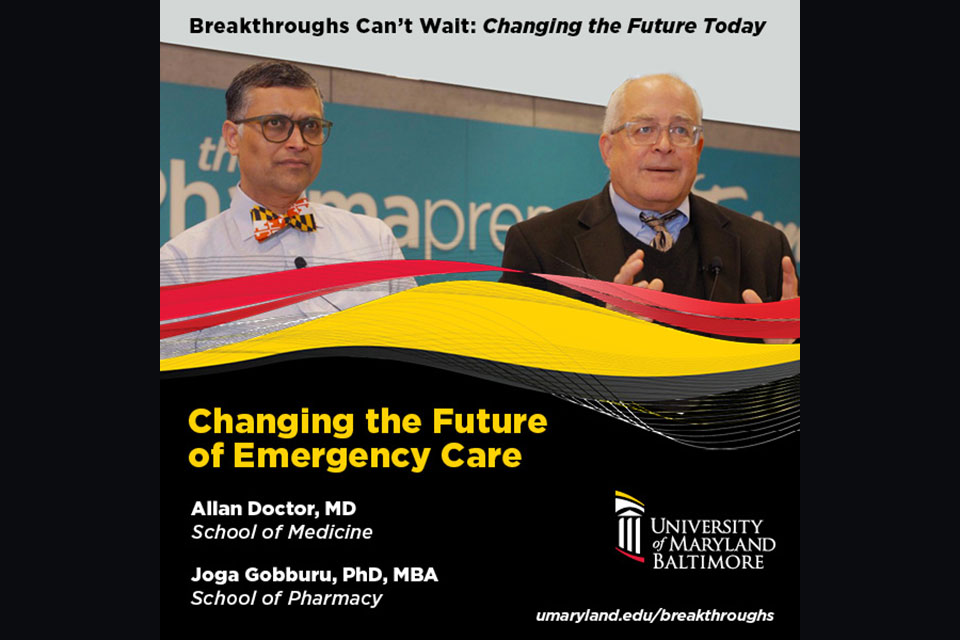Breakthroughs Can’t Wait: Revolutionizing Emergency Medicine
Allan Doctor, MD, of the School of Medicine and Joga Gobburu, PhD, MBA, of the School of Pharmacy are optimistic they are on the cusp of developing the world’s first viable artificial blood.

By UMB Communications and Public Affairs
June 5, 2025
Can an artificial blood product keep trauma victims alive until they can reach a medical facility?
Watch the video below for an interview with Doctor and Gobburu.
Emergency medical care begins at the site of trauma — a car accident, building collapse, gunshot, or some other life-threatening event. Sadly, a patient’s life often ends there, too. “Something like 20 to 30,000 people bleed to death every year in the U.S. alone because they don’t have access to blood at the point of injury or at the point of accident,” says Allan Doctor, MD, professor and director of the Center for Blood Oxygen Transport and Hemostasis at the University of Maryland School of Medicine. Doctor and research collaborator Joga Gobburu, PhD, MBA, professor and director of the Center for Translational Medicine at the University of Maryland School of Pharmacy, are optimistic they are on the cusp of developing the world’s first viable artificial blood.
Bleeding is the most common cause of trauma-related death that could be survivable. But survivability is hampered by the fact that whole blood has a relatively short shelf-life, is difficult to transport, and must be maintained at a proper temperature, making it impractical to travel with ambulances and medevac helicopters. The synthetic product under development by Doctor and Gobburu, however, overcomes these issues, making it possible for first responders to carry lifesaving blood product with them wherever they are.



